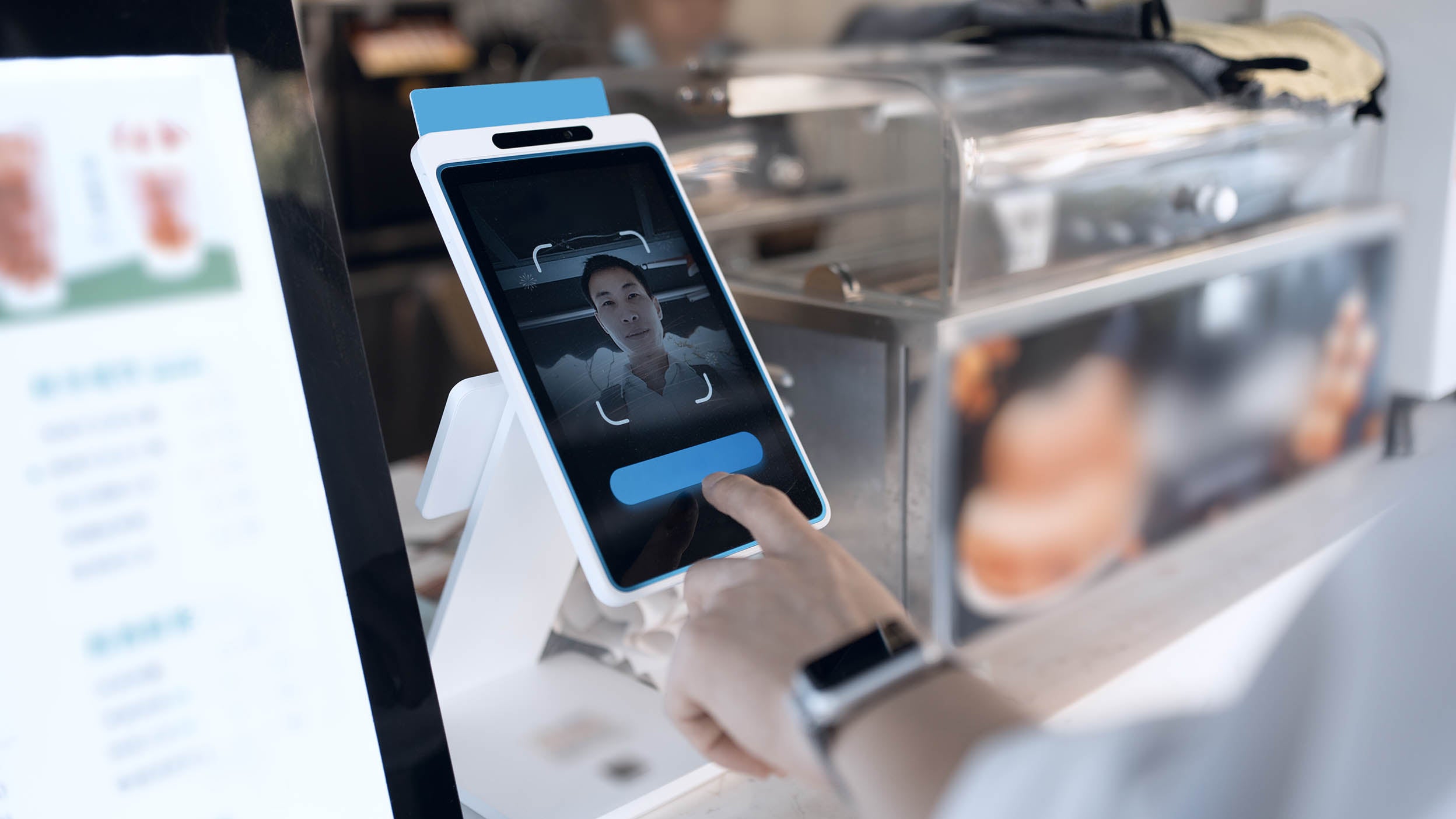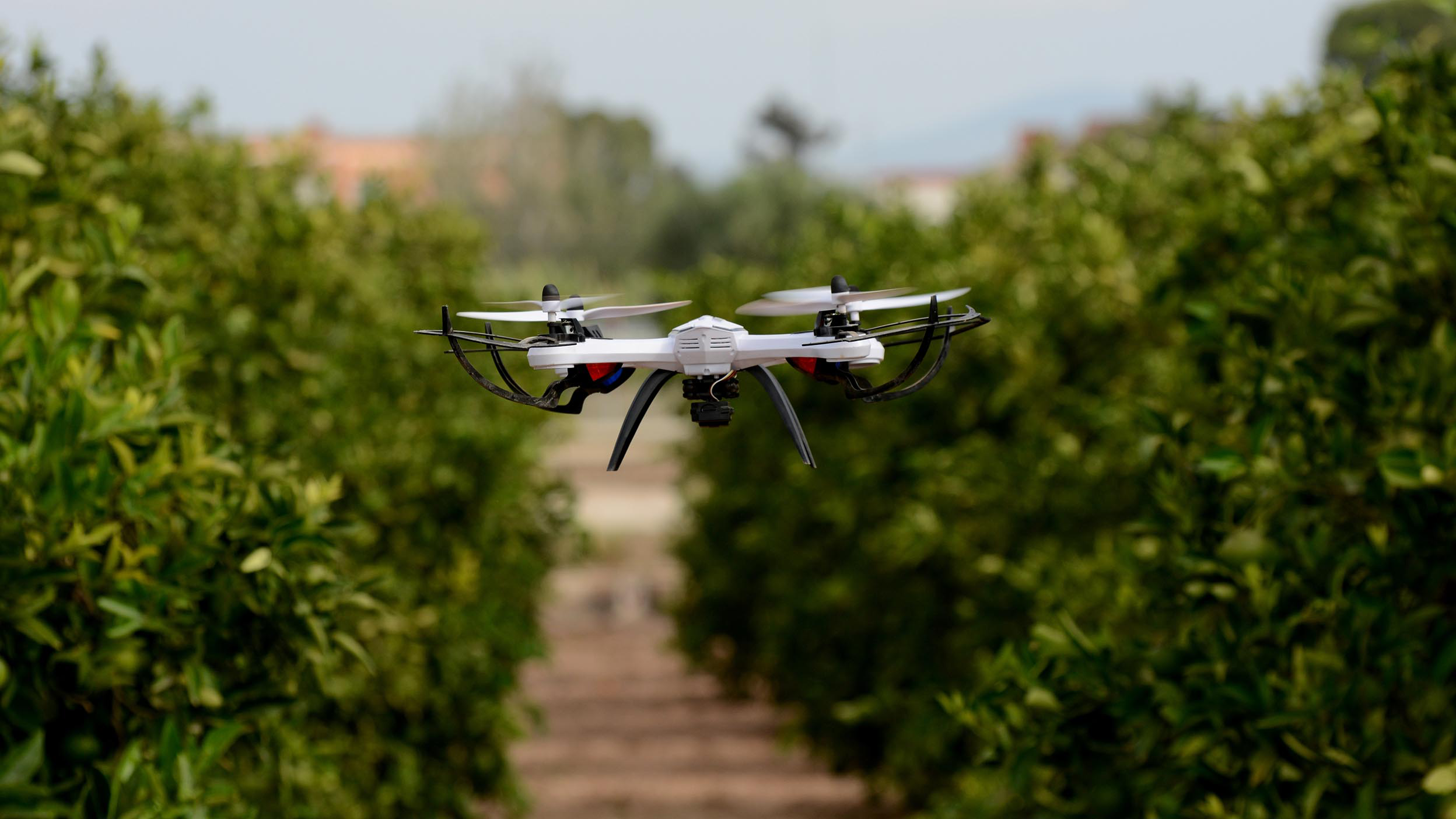
Innovation The Nasdaq-100: How innovation is powering your cup of coffee
Technology has disrupted just about everything. Learn how innovation is driving something as simple as your favorite cup of coffee.

From facial recognition to fingerprints, biometrics is a rapidly evolving technology that has applications across many industries. Aside from the convenience factor, biometrics has the potential to reduce identity theft and make our digital experiences more secure.
Biometrics uses our physical features to unlock devices, grant access, verify transactions, and much more. Today you can shop at the grocery store or securely log into apps by scanning your fingerprint, voice, facial features, or iris.
There are many ways biometrics makes our everyday lives easier, starting with not having to remember all those passwords. Forgot your car keys? Some automobiles can be unlocked and started with facial recognition software. Forgot your credit card? At some stores, you can just swipe your palm instead.
Although privacy concerns continue to linger around biometrics, the cutting-edge technology could expand rapidly in the coming years as more of our activities and transactions happen in the digital world.
The potential market for biometrics is vast because individuals, companies, and governments are all potential customers. The global biometrics market is still relatively small in terms of revenue, but it’s projected to grow at a compound annual growth rate of about 15% between 2024 and 2029, according to Mordor Intelligence.
Source: Mordor Intelligence. Biometrics Market Size & Share Analysis - Growth Trends & Forecasts (2024 – 2029), 2023
Concerns about cybersecurity alone could be a strong growth driver of biometric adoption. Requiring fingerprints and other physical characteristics that are difficult to replicate can help prevent theft and breaches of personal information.
For example, the healthcare industry is particularly prone to data breaches that can be very expensive for companies, according to IBM’s 2023 Cost of a Data Breach Report. Since 2020, healthcare data breach costs have increased by over 50%, according to the report.
| Sector | Average cost of a data breach |
| Healthcare | $10.9 million |
| Financial | $5.9 million |
| Pharmaceuticals | $4.8 million |
| Energy | $4.8 million |
| Industrial | $4.7 million |
Source: IBM’s 2023 Cost of a Data Breach Report.
Of course, biometrics has applications in many other industries such as banking and technology. The public sector is also a big potential customer.
Invesco QQQ ETF, which tracks the Nasdaq-100 Index, provides exposure to companies that are either involved directly in biometrics or provide infrastructure support such as artificial intelligence (AI) and data storage.
Amazon, a member of the Nasdaq-100, uses biometric technology in several of its businesses. Amazon One, the company’s palm recognition service for identification, payment, and loyalty membership, is available for use at its Whole Foods stores. Now, you don’t need your phone or even your wallet to pay – just swipe your palm. Amazon Web Services (AWS) offers a service called Rekognition that employs facial biometrics for online user identity verification and better security. Amazon’s Echo devices use Alexa voice ID to identify the speaker and provide a personalized experience.
Microsoft, another QQQ component, has incorporated Windows Hello into its Windows 10 operating system to let companies use fingerprint, facial recognition, or iris recognition to verify employees and unlock devices. Windows Hello is designed to strengthen authentication and help prevent potential spoofing attacks.
Alphabet, Google’s parent company and a QQQ holding, uses biometric authentication in Google’s Android operating system. One example of biometrics in play is the use of fingerprint scanning or facial recognition to activate smartphones. Last year, Google said it was making biometric authentication an option in the password manager for its Chrome desktop browser (previously it was only available for mobile devices). Apple’s iPhone, which, in January, overtook Samsung as the world’s largest smartphone manufacturer, also uses biometrics through Touch ID and Face ID technology.
Semiconductor manufacturers are also playing a role in biometrics innovation, helping to bring the technology to its partners and customers. Nvidia and NXP Semiconductors are examples of QQQ holdings that are developing AI technology that can be incorporated into biometrics for security and authentication. For example, Nvidia’s cutting-edge AI processors are critical for facial recognition software that taps into huge datasets. NXP Semiconductors has developed electronic identification cards that can incorporate biometric data like fingerprints or facial recognition to enhance security.
Select the option that best describes you, or view the QQQ Product Details to take a deeper dive.

Technology has disrupted just about everything. Learn how innovation is driving something as simple as your favorite cup of coffee.

Technology can thrive in unexpected places. Learn how three food and beverage industry leaders are innovating.
NA3349275
Past performance is not a guarantee of future results.
Investments focused in a particular sector, such as technology, are subject to greater risk, and are more greatly impacted by market volatility, than more diversified investments.
This does not constitute a recommendation of any investment strategy or product for a particular investor. Investors should consult a financial professional/financial consultant before making any investment decisions.
The opinions expressed are those of the author, are based on current market conditions and are subject to change without notice. These opinions may differ from those of other Invesco investment professionals.
This information is provided for informational purposes and does not constitute an endorsement or recommendation of any companies referenced.
This content should not be construed as an endorsement for or recommendation to invest in Amazon.com Inc, Microsoft Corp, Alphabet Inc Class A, Apple Inc, NVIDIA Corp, or NXP Semiconductors NV. Neither Amazon.com Inc, Microsoft Corp, Alphabet Inc Class A, Apple Inc, NVIDIA Corp, nor NXP Semiconductors NV are affiliated with Invesco. Only 6 of 101 underlying Invesco QQQ ETF fund holdings are featured. The companies referenced are meant to help illustrate representative innovative themes, not serve as a recommendation of individual securities. Holdings are subject to change and are not buy/sell recommendations. See invesco.com/qqq for current holdings. As of 1/24/2024, Amazon.com Inc, Microsoft Corp, Alphabet Inc Class A, Apple Inc, NVIDIA Corp, and NXP Semiconductors NV made up 4.80%, 8.82%, 2.59%, 9.03% 4.40%, 0.44% respectively, of Invesco QQQ ETF.